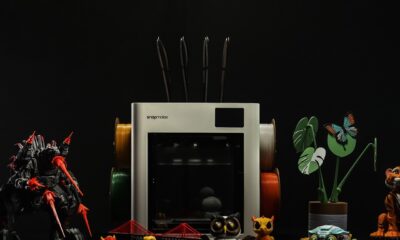Science
Concordia Researchers Innovate Pathogen Tracking for Indoor Spaces
Researchers at Concordia University have unveiled a groundbreaking method for tracking the spread of disease-causing particles, or pathogens, in indoor environments. This innovative tool aims to enhance disease containment efforts for future outbreaks, including those similar to COVID-19. The findings were published in the journal Building and Environment.
The new method employs real-time camera and sensor-based tracking of infected individuals, combined with algorithm-driven air and pathogen dispersal models. This system assesses potential infection risk levels while also offering the capability to alert ventilation systems, thereby optimizing air flow and minimizing the risk of transmitting pathogens to others.
Zeinab Deldoost, a PhD candidate and lead author of the study, explained, “Our novel method greatly reduces the simulation time found in other studies, giving us a better estimation of whether a location that has been exposed to pathogens still poses a risk.” Traditional models often capture only brief moments of airborne spread, typically under one minute. In contrast, this new approach can simulate pathogen dispersal over extended periods.
Monitoring and Analyzing Pathogen Dispersion
The model’s effectiveness resides in its ability to streamline computational processes. Instead of calculating how a person’s movement influences airflow, the researchers treat the individual as a massless moving emission source. This allows for a consistent evaluation of airflow dynamics, which is critical for understanding how pathogens disperse from a mobile source.
The team validated their approach by demonstrating that a person’s presence disrupts airflow only temporarily. They found that normal airflow resumes approximately 40 seconds after an individual exits a room, with the disturbance affecting only about one meter around their path. Consequently, the impact on pathogen dispersal over larger areas and extended durations is minimal.
With this enhanced methodology, the model can simulate one second of pathogen dispersion in just 3.8 seconds on a standard laptop. This efficiency makes the system particularly well-suited for complex indoor spaces with fluctuating occupancy, such as hospitals. It also empowers decision-makers to make near real-time choices regarding public health measures.
Co-author Fariborz Haghighat, a professor in the Department of Building, Civil and Environmental Engineering at the Gina Cody School of Engineering and Computer Science, remarked, “If we know a person is sick, then this system helps us monitor them and find out the dimensional dispersion of the pathogen around them.” The presence of sensors within a building enables continuous tracking of infected individuals and assessment of potential contact with others.
Future Applications and AI Integration
Another co-author, Fuzhan Nasiri, also a professor in the same department, expressed optimism about the broader implications of this research. He stated, “If we could use this simulation over an extended period under different scenarios, we could generate enough data to represent different patterns with respect to movement and dispersion.” This data could facilitate the training of artificial intelligence systems, allowing future users to avoid running complete simulations for similar results.
This research received support from the Natural Sciences and Engineering Research Council of Canada through a Discovery Research Grant. The findings not only represent a significant advancement in pathogen tracking technology but also hold promise for improving public health responses in indoor settings.
For more information, the detailed study can be accessed in the article titled “Real-time analysis of pathogen dispersion patterns resulting from a moving infectious person.”
-

 Science3 months ago
Science3 months agoToyoake City Proposes Daily Two-Hour Smartphone Use Limit
-

 Top Stories3 months ago
Top Stories3 months agoPedestrian Fatally Injured in Esquimalt Collision on August 14
-

 Health3 months ago
Health3 months agoB.C. Review Reveals Urgent Need for Rare-Disease Drug Reforms
-

 Technology3 months ago
Technology3 months agoDark Adventure Game “Bye Sweet Carole” Set for October Release
-

 World3 months ago
World3 months agoJimmy Lai’s Defense Challenges Charges Under National Security Law
-

 Lifestyle3 months ago
Lifestyle3 months agoVictoria’s Pop-Up Shop Shines Light on B.C.’s Wolf Cull
-

 Technology3 months ago
Technology3 months agoKonami Revives Iconic Metal Gear Solid Delta Ahead of Release
-

 Technology3 months ago
Technology3 months agoApple Expands Self-Service Repair Program to Canada
-

 Technology3 months ago
Technology3 months agoSnapmaker U1 Color 3D Printer Redefines Speed and Sustainability
-

 Technology3 months ago
Technology3 months agoAION Folding Knife: Redefining EDC Design with Premium Materials
-

 Business3 months ago
Business3 months agoGordon Murray Automotive Unveils S1 LM and Le Mans GTR at Monterey
-

 Technology3 months ago
Technology3 months agoSolve Today’s Wordle Challenge: Hints and Answer for August 19









